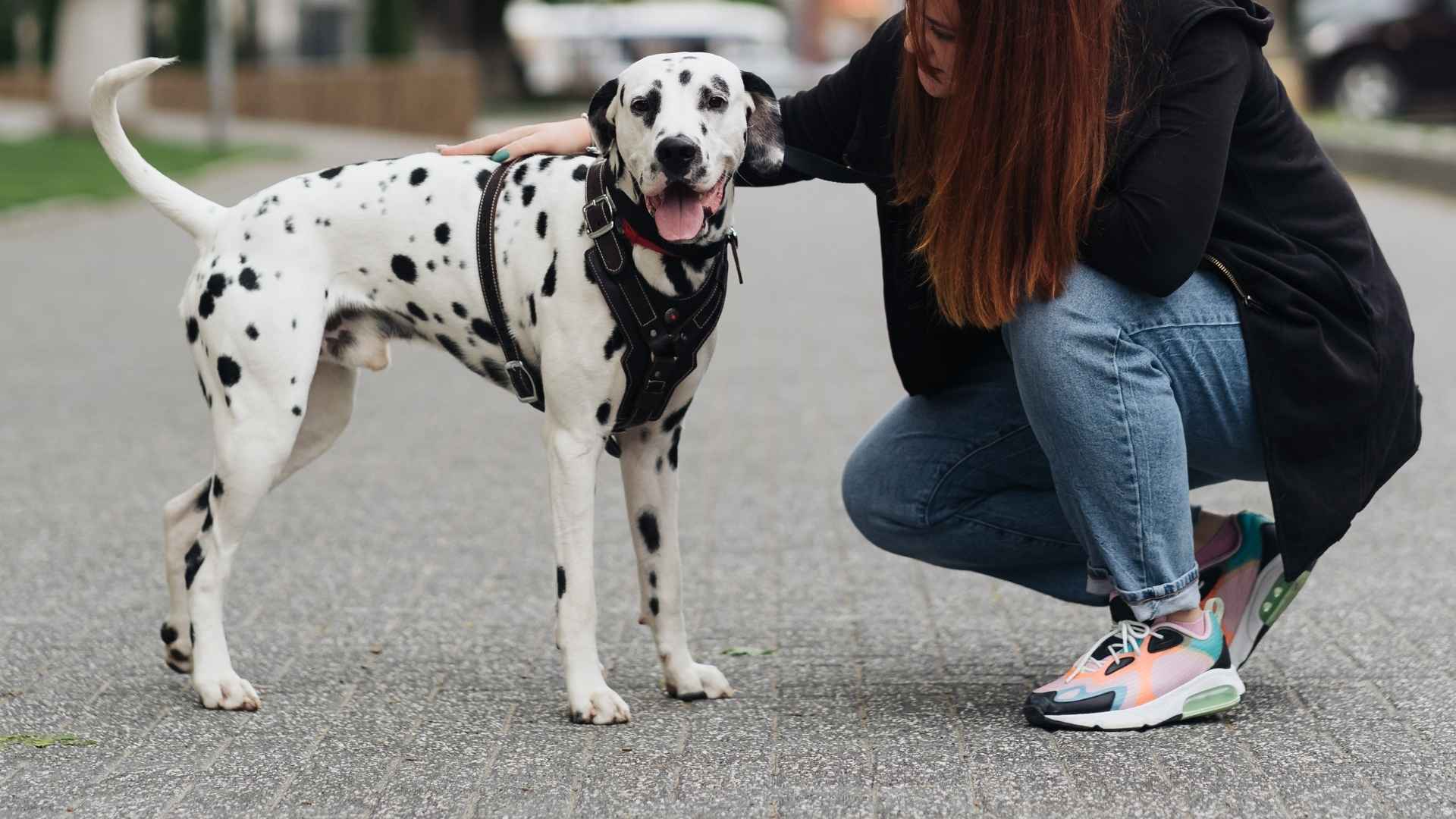Some dogs are natural social butterflies, while others prefer to observe from a distance before warming up. If you’ve ever noticed a pup hesitating around new people, they probably belong to the “shy with strangers” category.
These dogs aren’t aggressive or unfriendly—they take time to build trust and feel comfortable in unfamiliar situations. Their reserved nature can stem from genetics, early socialization, or personal experiences.
Owning a shy dog comes with its own set of rewards and challenges. While they may not eagerly greet every guest at the door, they form deep, loyal bonds with their families. Even the most timid pups can grow more confident with patience, positive reinforcement, and proper training.
In this guide, we’ll explore dog breeds that are naturally shy around strangers, why they behave this way, and how you can help them feel secure in social settings.
Shy with Strangers Dog Breeds
1. Maltese

The Maltese are known for their affectionate nature, but can be shy around strangers. Originally bred as a companion dog for nobility, this small breed tends to be cautious in unfamiliar situations and may take time to warm up to new people. They prefer to stay close to their owners, observing safely before feeling comfortable.
Despite their small size, Maltese dogs can be surprisingly protective. Their wariness around strangers makes them alert watchdogs. However, they are not aggressive and usually respond with hesitation rather than hostility. With proper socialization, they can learn to be more trusting.
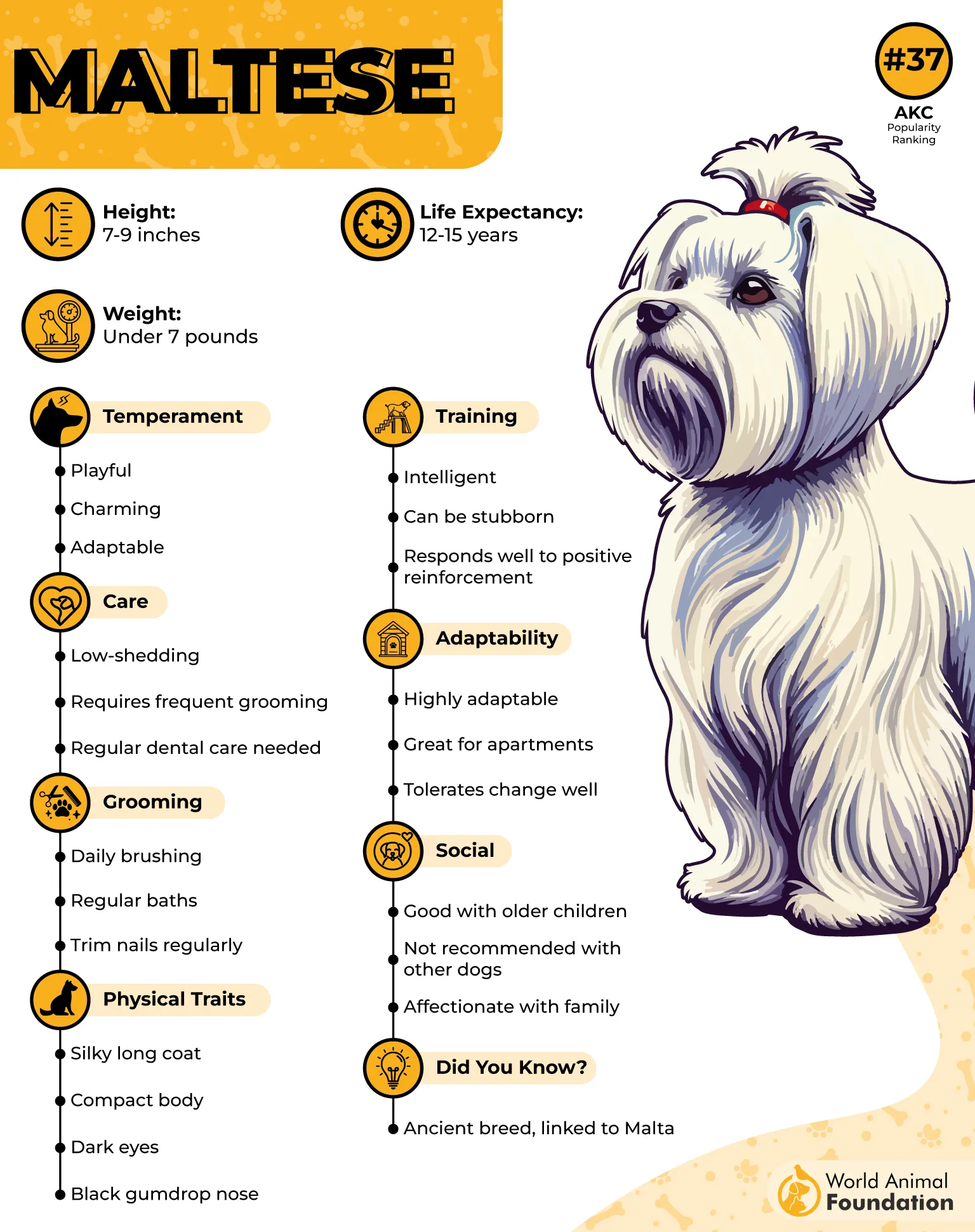
Maltese benefit greatly from early exposure to different people and environments. Introducing them to new experiences as puppies helps reduce their shyness. Positive reinforcement, treats, and gentle encouragement can build confidence and ease nervousness.
These dogs form deep attachments to their owners, often preferring their company over anyone else’s. This close bond can contribute to their reserved nature around strangers. They thrive on companionship and may become anxious when separated from their trusted humans.
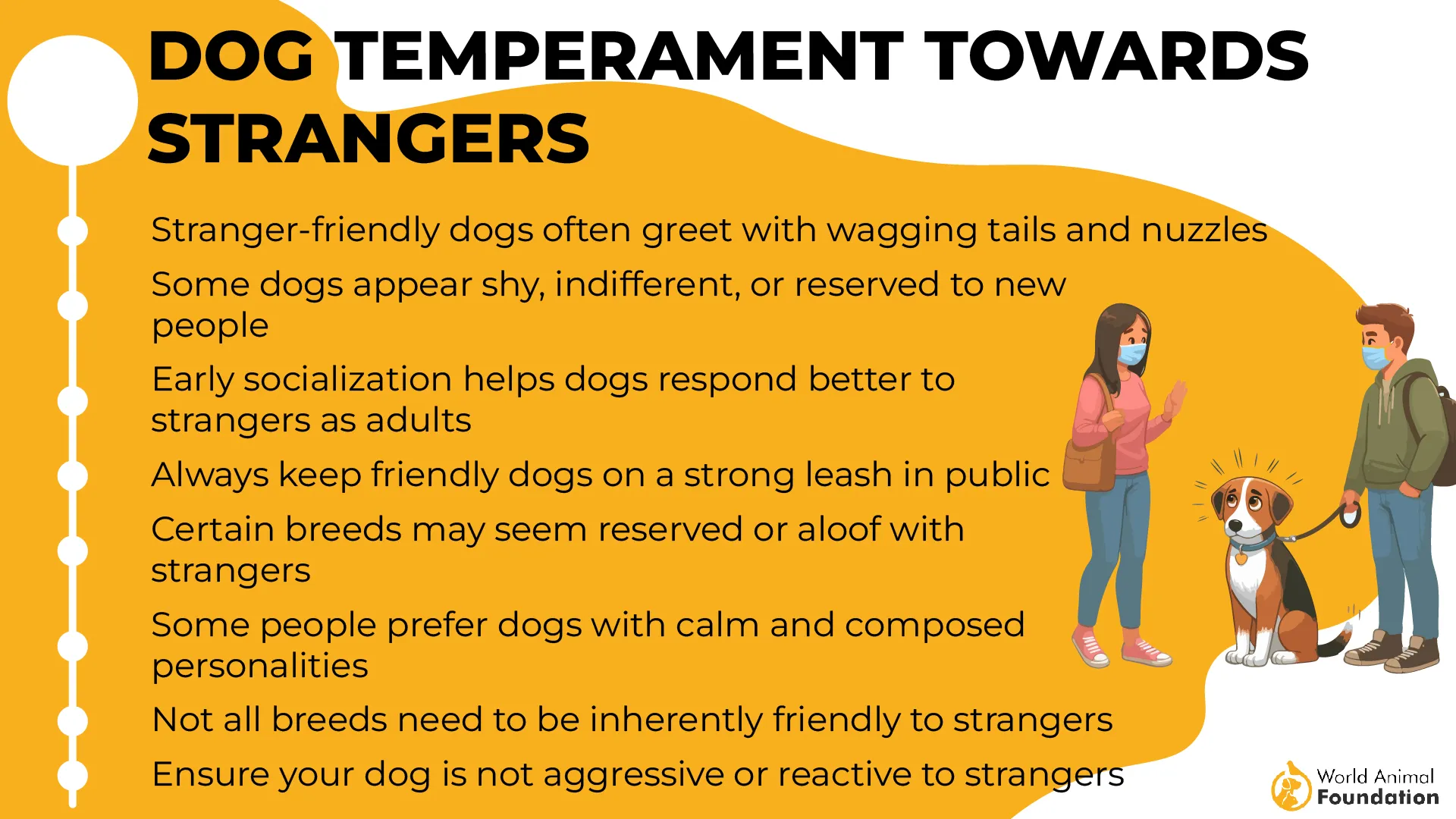
A Maltese is best suited for a calm, loving home that feels safe. Loud environments or frequent encounters with unfamiliar people may make them uneasy. A predictable routine and reassuring presence help them feel more secure and relaxed.
Patience and consistency are key when helping a shy Maltese become more social. Regular outings, meeting friendly visitors, and positive reinforcement can boost their confidence. Over time, they can become more comfortable with new faces while maintaining their naturally cautious nature.
2. Yorkshire Terrier

The Yorkshire Terrier, despite its bold personality, can be a shy dog breed when meeting strangers. Originally bred as a rat hunter before becoming a cherished companion, this tiny yet confident dog often takes a cautious approach to unfamiliar faces.
They prefer to assess their surroundings before deciding who to trust, making them one of the more timid dog breeds in social settings.
Yorkies form deep bonds with their owners and find great joy in their company. This attachment can make them hesitant around new people, especially if they haven’t been properly socialized. While naturally curious, they also have reserved behavior in an unfamiliar world.
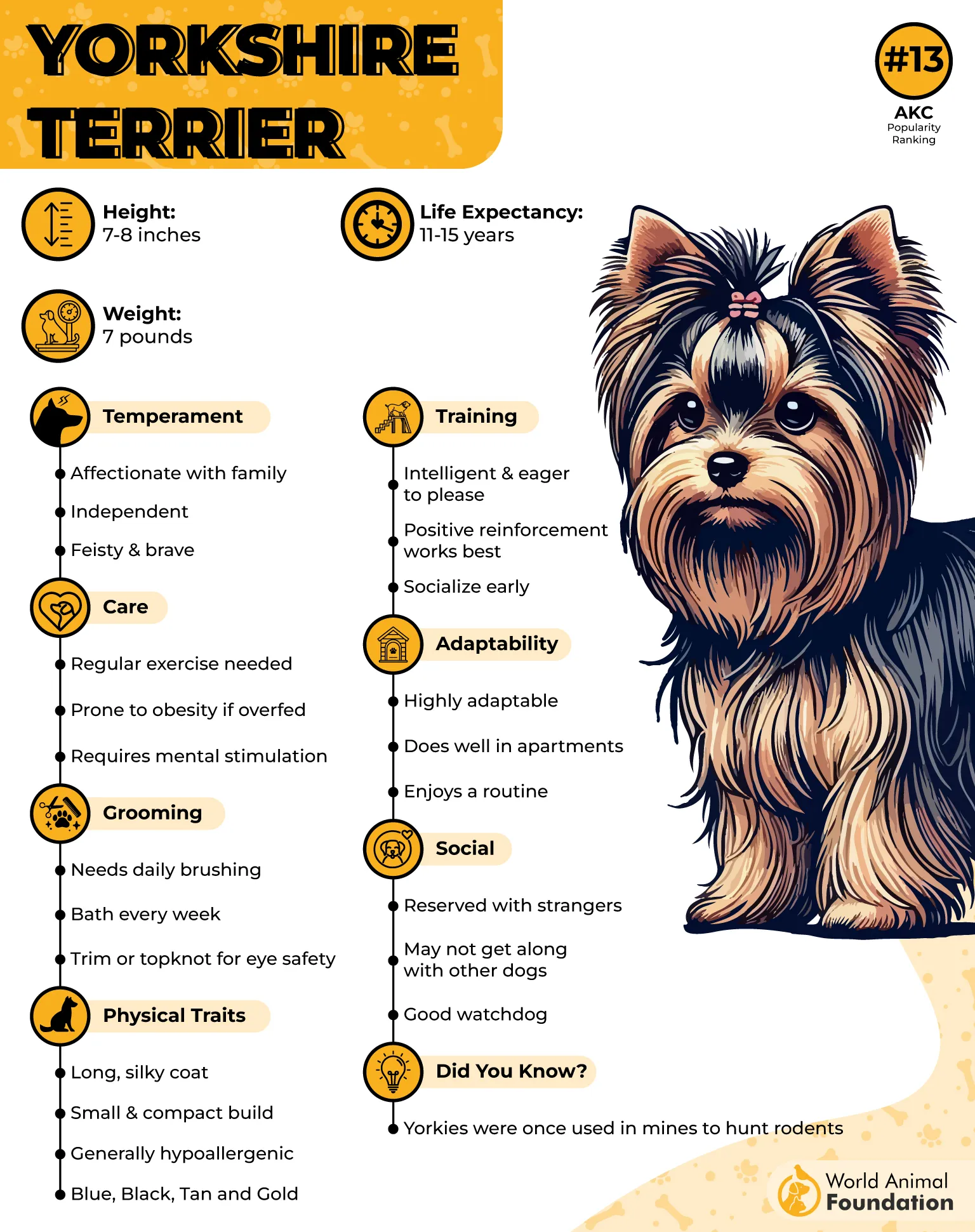
Early socialization plays a crucial role in helping Yorkshire Terriers become more sociable. Exposure to different environments, people, and gentle interactions can reduce their timidness. They can learn to feel more at ease in social situations with positive reinforcement and patience.
Although they may initially appear standoffish, Yorkies are known for their lively and affectionate nature once they feel secure. Their playful personality shines through when they are around familiar faces, bringing immense joy to their loved ones. Given time and reassurance, they can become more comfortable and trusting of new faces.
Due to their small stature, Yorkshire Terriers can be more cautious around larger animals and unfamiliar individuals. Their wariness is not aggression but an instinct to stay safe. They may retreat or observe from a distance before slowly engaging in social interactions.
For owners of this timid dog breed, consistency and encouragement are key. By gradually introducing their Yorkie to new experiences safely and positively, they can help their furry companion feel more confident. With love and patience, these tiny yet strong-willed dogs can navigate the world with a balance of caution and sociability.
3. Cavalier King Charles Spaniel
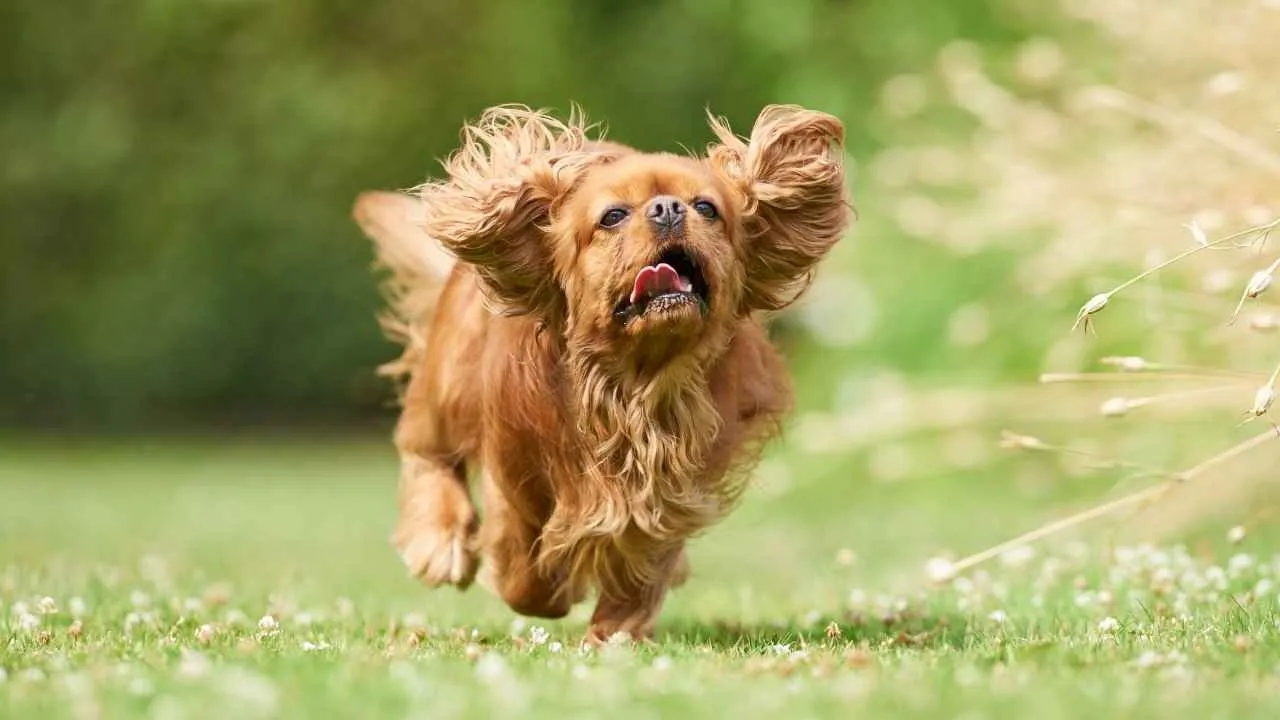
The Cavalier King Charles Spaniel is a loving and affectionate breed, but some can be shy around strangers. Originally bred as a royal companion, this small dog thrives on human interaction yet may hesitate in unfamiliar situations. Their initial reserve is not due to aggression but a natural caution that fades with time and trust.
Cavaliers are excellent family dogs, forming strong emotional bonds with their owners. They seek constant companionship and may feel uneasy when meeting new people. Proper socialization from a young age helps them become more confident and comfortable in different environments.
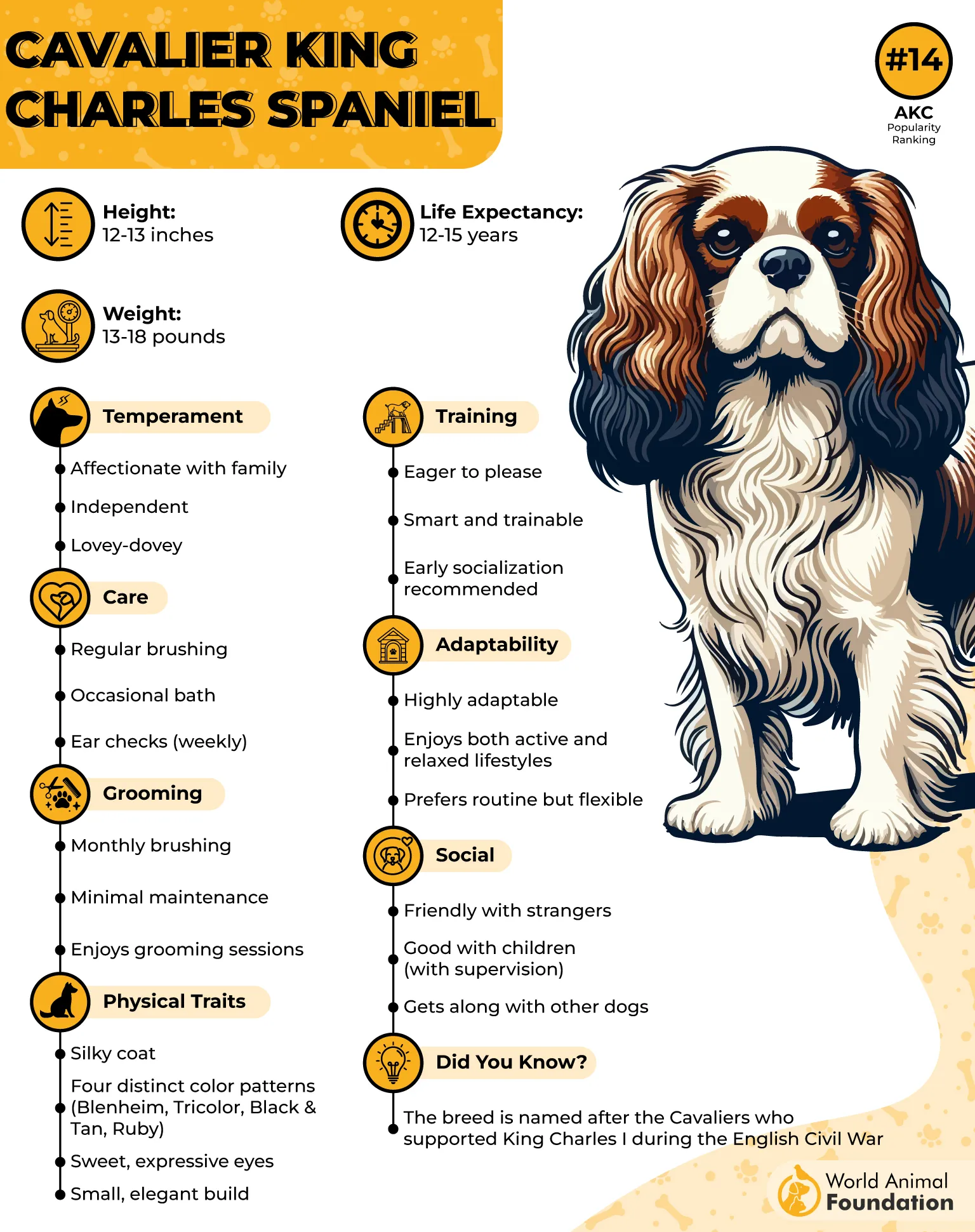
A Cavalier’s gentle nature makes them sensitive to their surroundings. Loud noises, sudden movements, or unfamiliar settings can make them hesitant. They often observe from a safe distance before deciding to engage, relying on their owner’s reassurance for security.
Despite their shyness, Cavaliers are incredibly affectionate and eager to please. Their loving temperament makes them easy to train, especially when using positive reinforcement. A calm and encouraging approach helps them overcome their timid nature.

Raising a well-socialized Cavalier involves gradual exposure to new people and experiences. Frequent outings, gentle introductions, and rewarding positive interactions can help them feel more at ease. Early training plays a key role in shaping their social confidence.
With patience and consistency, shy Cavaliers can blossom into friendly and sociable companions. Once they feel secure, their playful and affectionate nature shines through, making them excellent family dogs and deeply loyal and loving pets.
4. Basenji
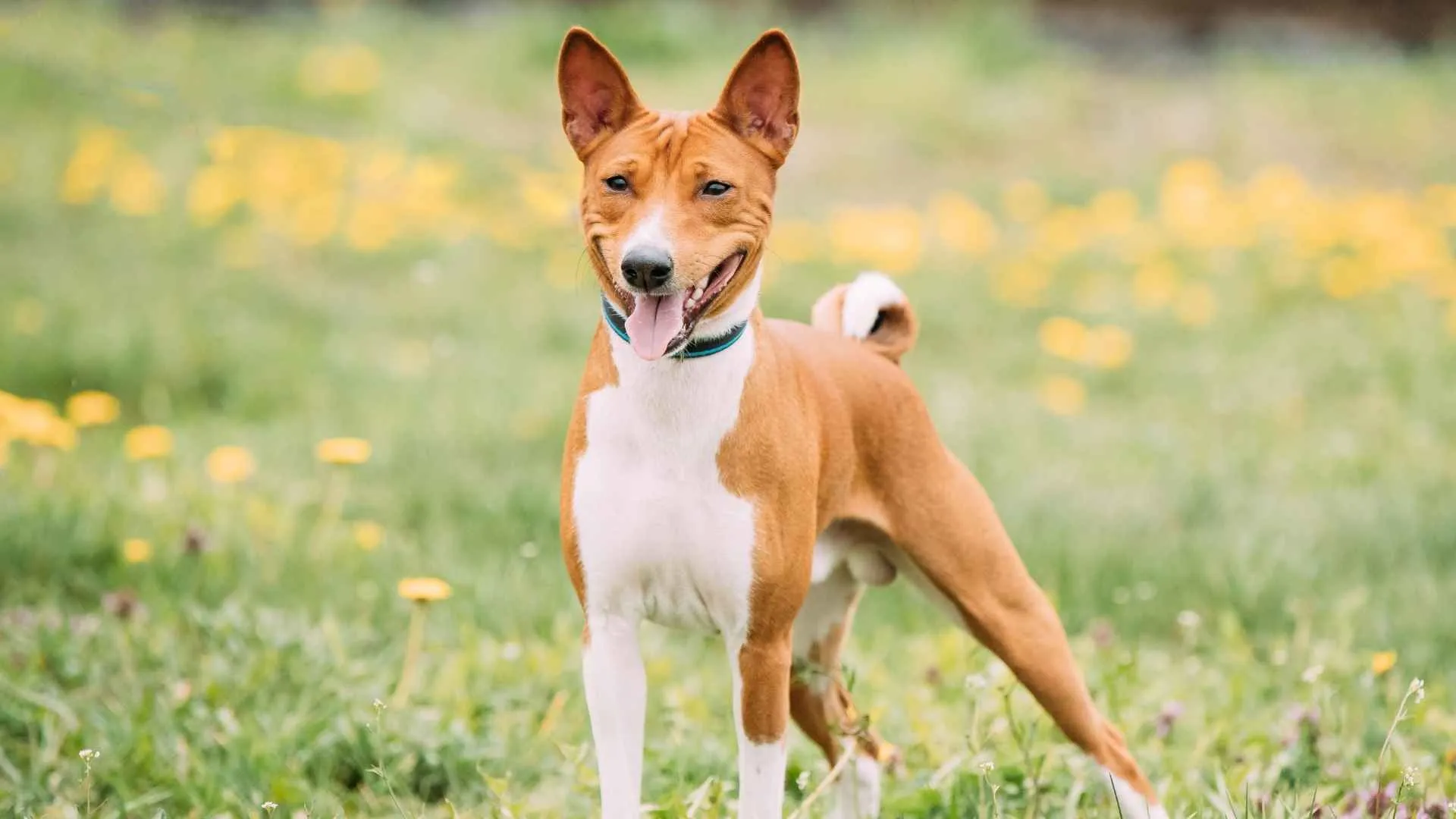
The Basenji is an independent and intelligent breed, but is often shy with strangers. Known as the “barkless dog,” this breed tends to be reserved around unfamiliar people, preferring the comfort of its trusted family members. Rather than greeting strangers with enthusiasm, a Basenji will usually observe from a distance before deciding whether to engage.
This breed forms strong bonds with its family members and thrives in a familiar environment. While affectionate with those they trust, Basenjis do not easily warm up to new people. Their cautious nature makes them less likely to seek attention from strangers, and they may even retreat if approached too quickly.
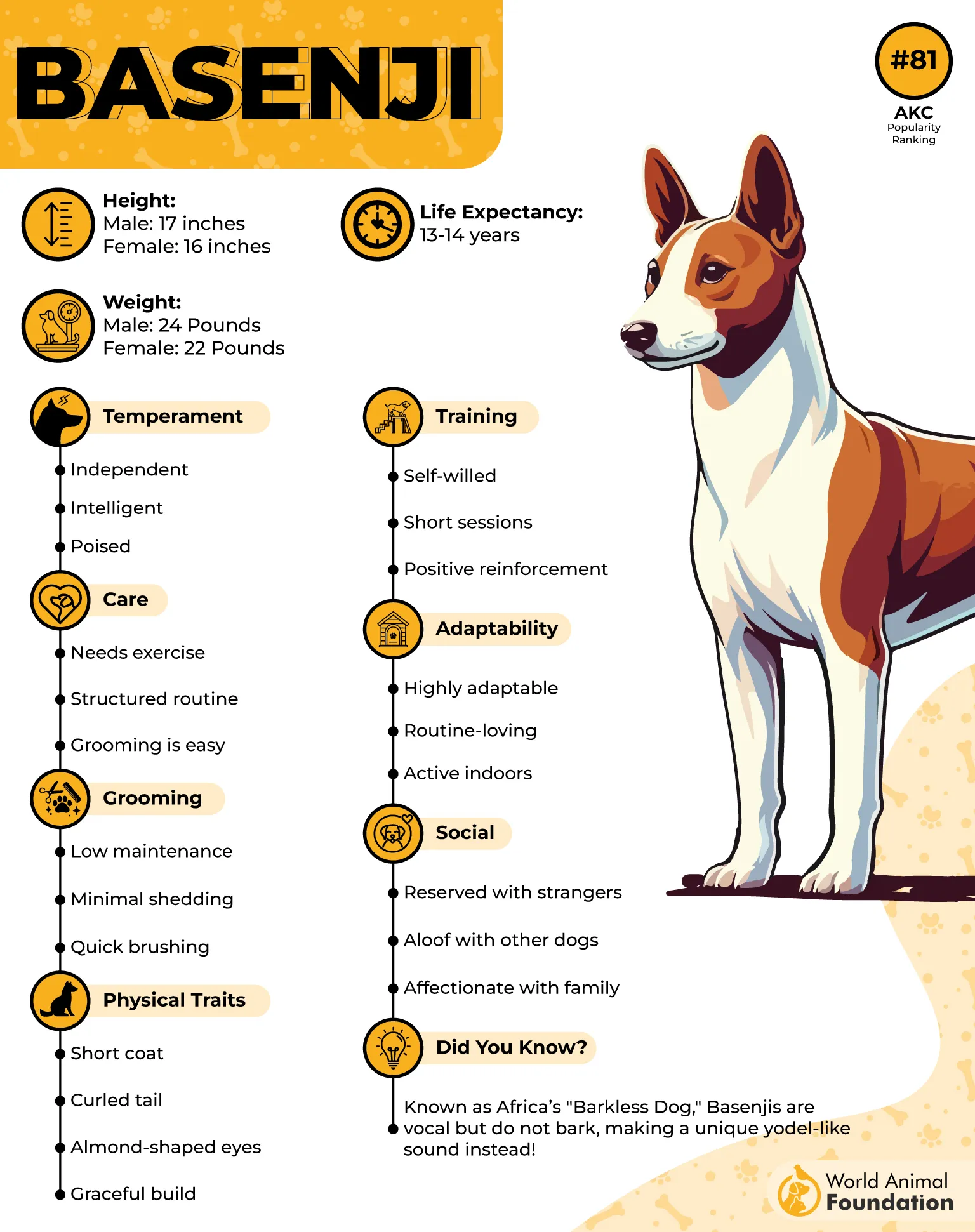
Orvis states that Basenjis are selective about their interactions. They are generally more comfortable around other dogs they know well, but may be wary of unfamiliar ones. Proper introductions and gradual exposure can help them feel at ease in social settings.
Basenjis can coexist peacefully with other pets in the house, especially if raised with them. However, their independent nature means they may not be overly affectionate toward other animals. Their reserved demeanor extends beyond humans, as they prefer controlled and familiar interactions.
A structured environment is key to helping a shy Basenji feel secure. Loud or unpredictable situations can heighten their wariness, making them retreat. A stable routine, along with positive reinforcement, helps them build confidence over time.
Though naturally shy with strangers, Basenjis can become more trusting with patience and socialization. Slowly introducing them to new people and experiences calmly and positively allows them to feel more comfortable while maintaining their independent and dignified personality.
5. Greyhound
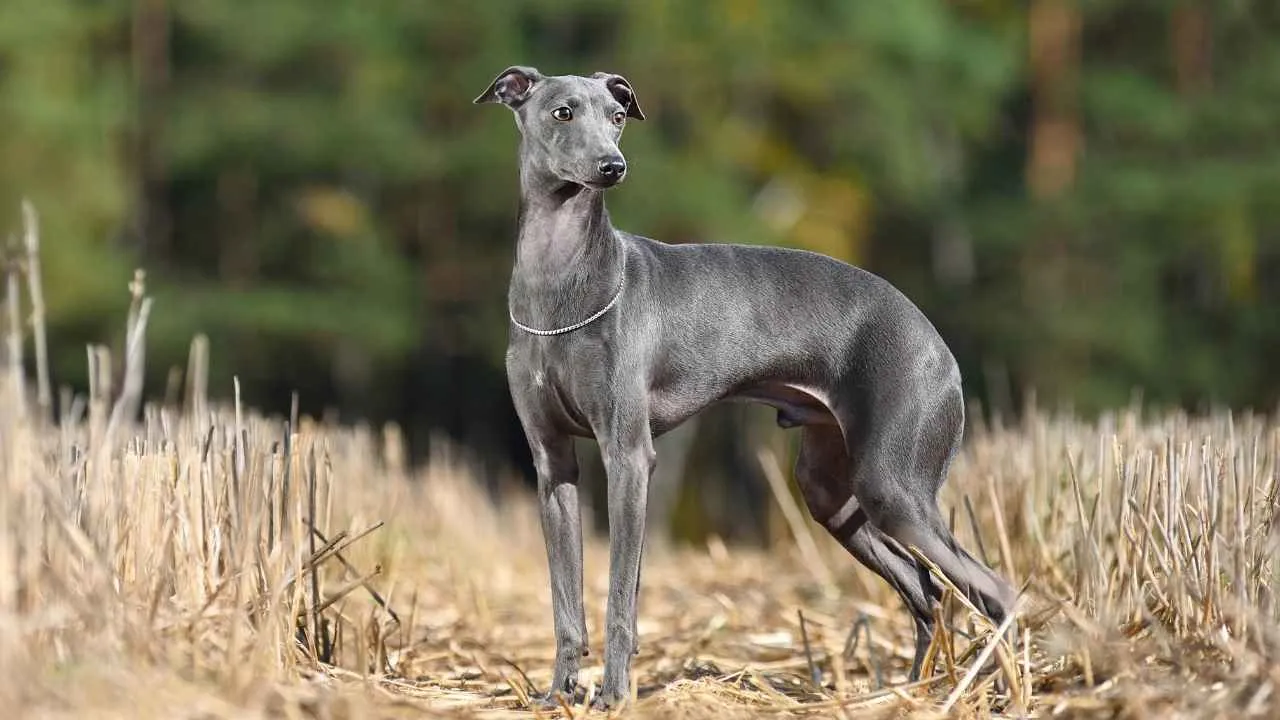
Greyhounds are known for their gentle and quiet nature, but many can be shy with strangers. Originally bred for racing and hunting, these dogs form strong bonds with their owners but may take time to warm up to unfamiliar people. Their reserved behavior is not a sign of fear or aggression—it is simply part of their naturally cautious personality.
If you adopt a Greyhound, especially a retired racing dog, expect some initial hesitation around new people. Many have had limited social experiences outside their racing environment, making them unsure about unfamiliar faces. They may observe from a distance, approaching only when they feel safe.
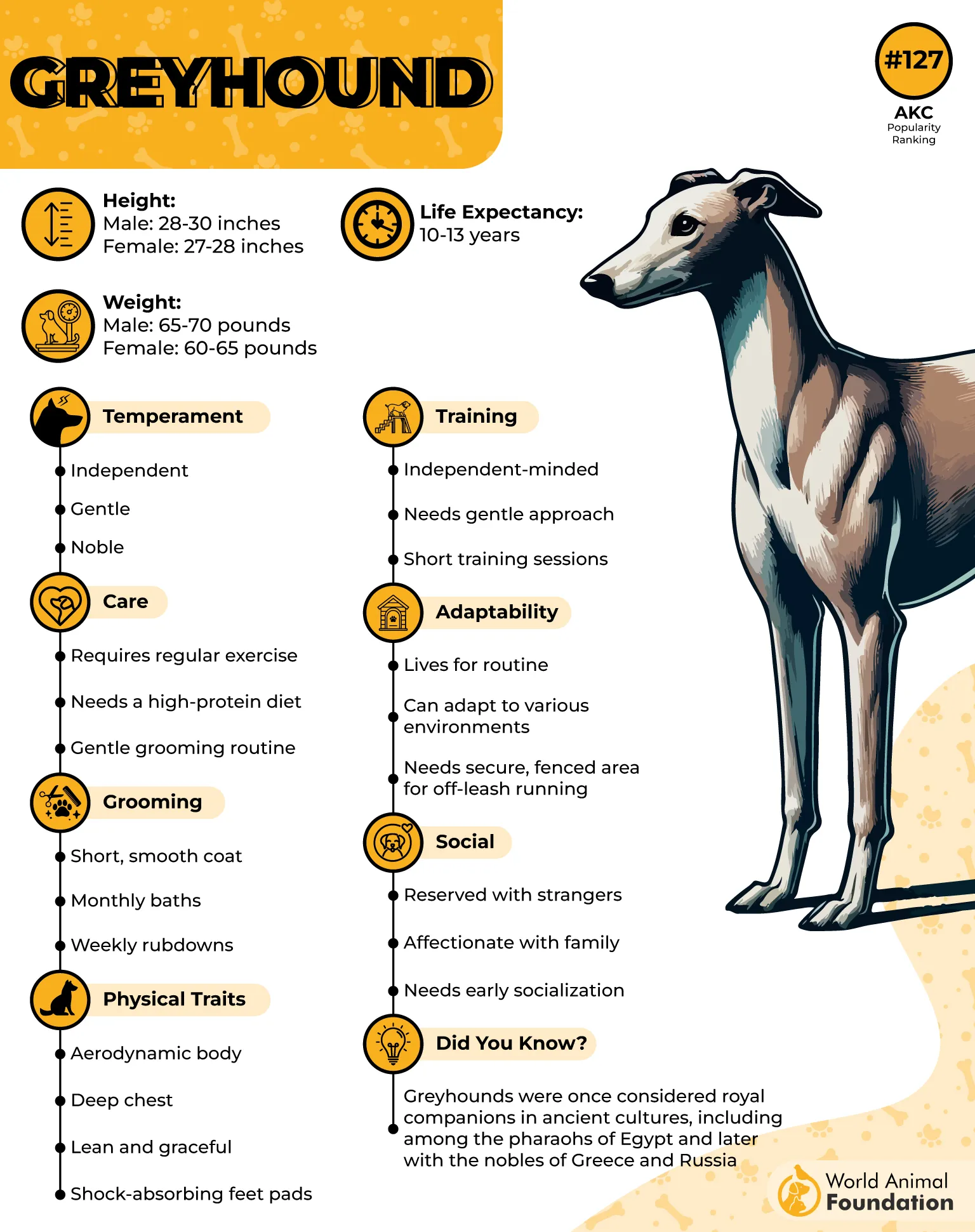
Britannica states that Greyhounds tend to be affectionate and relaxed at home but may become reserved in unfamiliar situations. They are sensitive dogs that pick up on their owners’ emotions, often relying on reassurance when faced with new experiences. A calm and patient approach helps them feel more secure.
When meeting strangers, Greyhounds may not immediately seek attention or affection. Instead, they prefer slow introductions and time to adjust. Forcing interactions can increase their shyness, so allowing them to approach on their terms is the best way to build trust.
Those who adopt a Greyhound should expect to work on socialization gradually. Regular exposure to different people and environments and positive reinforcement can help them become more confident. Encouraging gentle interactions rather than overwhelming them is key to easing their timidness.
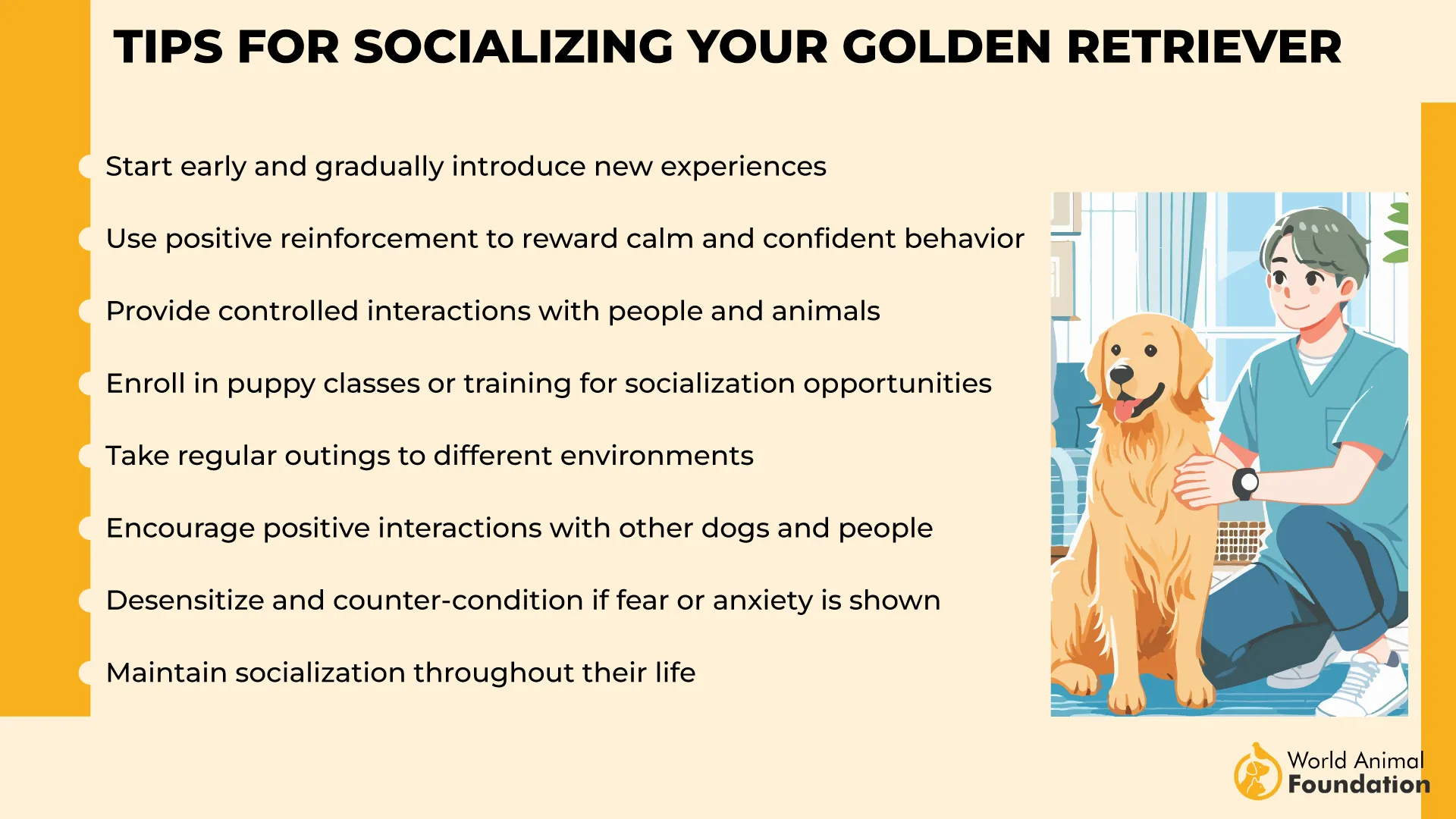
With time, patience, and a stable home environment, even a shy Greyhound can grow into a more social and trusting companion. Their initial reserve with strangers fades as they learn to feel safe, allowing their affectionate and loyal nature to shine through.
6. Whippet
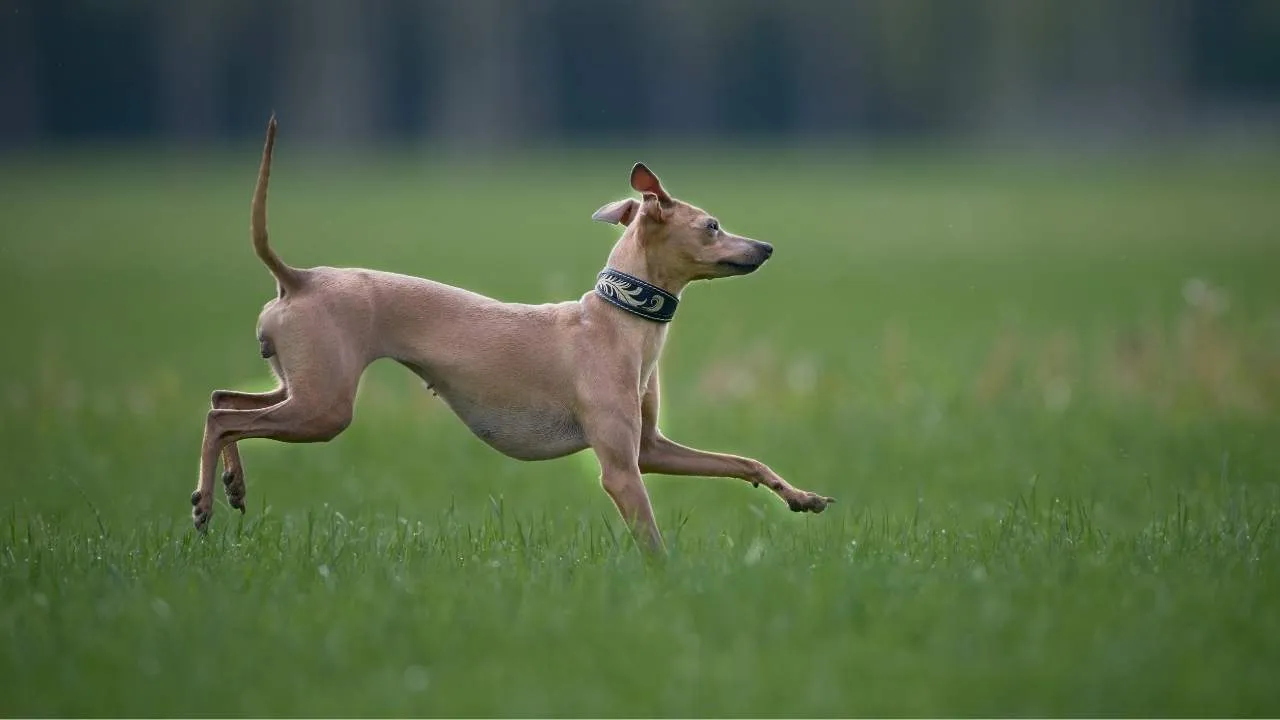
Whippets are gentle and affectionate dogs, but can be shy with strangers. Their reserved nature often shows in new environments, where they may hesitate before approaching unfamiliar people.
Whippets rely on observation and subtle body language to express their comfort level, often choosing to stay close to their owners in uncertain situations. When introduced to new people, a Whippet’s body language speaks volumes. They may lower their head, avoid direct eye contact, or lean away if unsure.
This quiet, non-confrontational behavior is not aggression but a natural response to such situations. Understanding these signals is essential for helping them feel at ease.

PDSA states that Whippets can be particularly reserved in busy or loud environments, especially around strangers. Socialization from an early age is essential to help them gain confidence. Slow introductions, treats, and positive reinforcement can gradually encourage them to interact more comfortably.
Despite their shyness, Whippets are excellent companions for families, including those with children. However, they may take longer to trust unfamiliar guests or new caregivers. Teaching children to approach them gently and respect their space can help build a positive relationship.
New environments can heighten a Whippet’s cautious nature, making patience and reassurance key. Whether visiting a friend’s house or encountering new people on a walk, allowing them time to adjust at their own pace prevents unnecessary stress.
With consistent socialization and a supportive home, Whippets can learn to be more confident around strangers. At the same time, they may always be somewhat reserved; their deep loyalty and affectionate nature shine once they feel secure.
7. Lhasa Apso
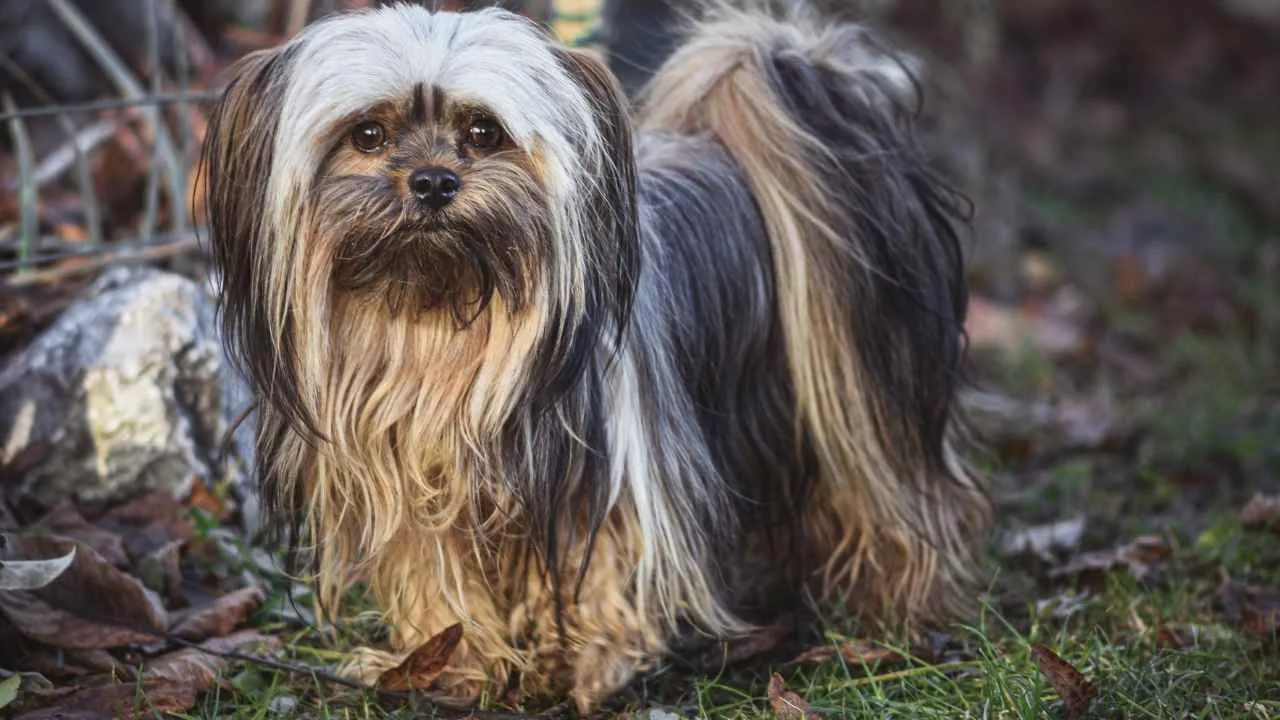
The Lhasa Apso is a loyal and independent breed, often shy with strangers. Originally bred as a sentinel dog in Tibetan monasteries, this breed naturally warms toward unfamiliar people. While deeply affectionate with their families, they tend to be reserved around most people they don’t know, carefully assessing new situations before deciding to engage.
Lhasa Apso does not immediately warm up to strangers. In new situations, they prefer to observe rather than seek attention, often keeping their distance until they feel comfortable. This cautious nature makes them excellent watchdogs, but it also means they require patience when socializing.
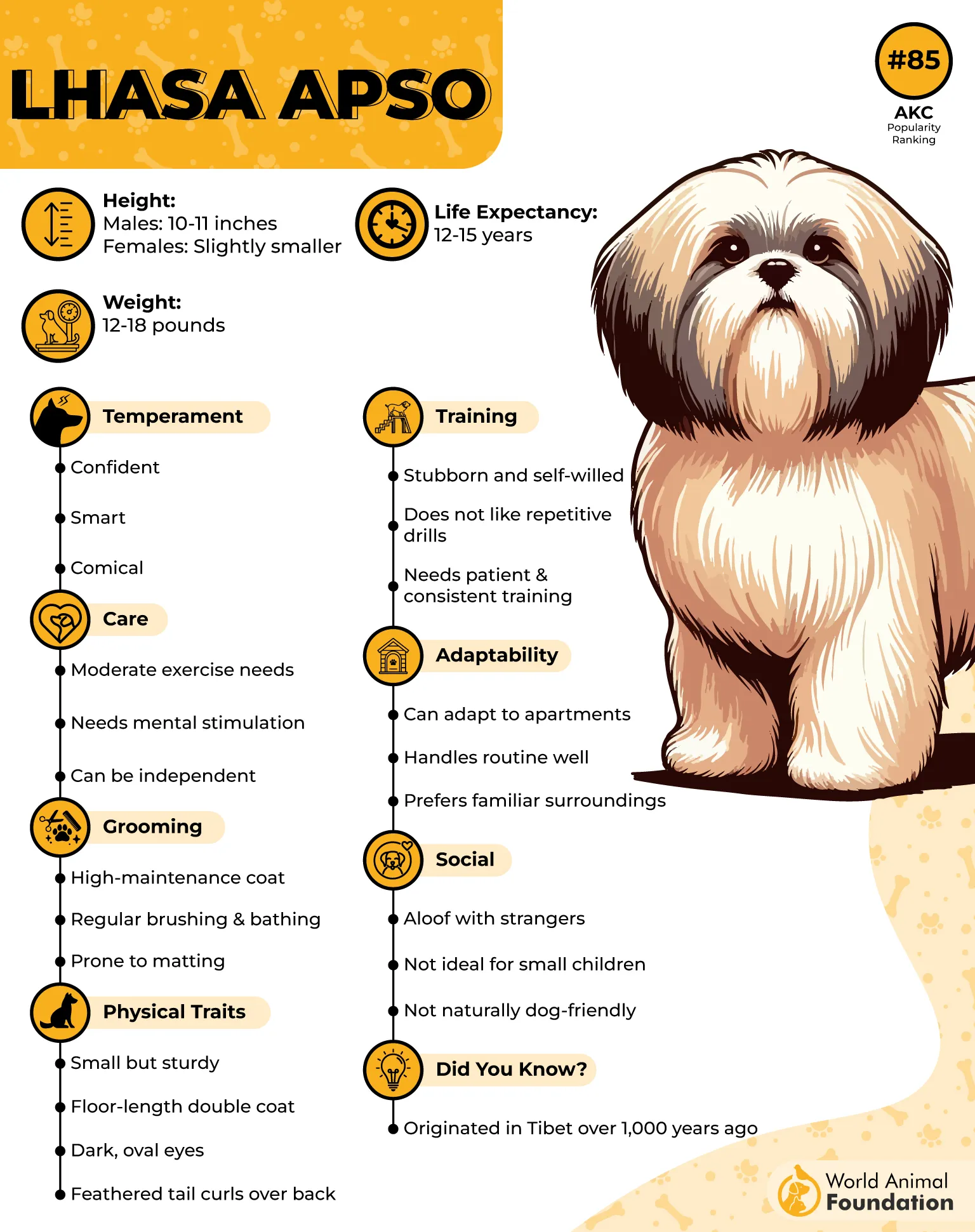
Their shyness is not a sign of fear but a deeply ingrained trait from their history as alert and protective companions. Many Lhasa Apsos take time to trust new people, relying on their owner’s cues to determine whether a stranger is a friend or a potential threat.
Introducing a Lhasa Apso to new situations should be done gradually. Overwhelming them with too much interaction too quickly can make them retreat further. Positive reinforcement, treats, and gentle encouragement help them adjust independently.
Because they form strong bonds with their families, Lhasa Apsos’ life is centered around those they trust. While they may remain aloof toward most people outside their circle, they are incredibly devoted to their loved ones, offering affection and companionship.
A Lhasa Apso can become more accepting of new people and experiences with proper socialization and a stable home environment. While they may always be somewhat reserved, their loyalty and protective nature make them a cherished companion for those who understand their unique personality.
Conclusion
Some dog breeds naturally exhibit shyness around strangers due to their protective instincts, reserved temperament, or past experiences. While socialization and training can help build confidence, respecting their need for space and gradual introductions is essential.
With patience and positive reinforcement, even the most timid dogs can learn to feel more secure in new environments while maintaining their gentle and loyal nature.


